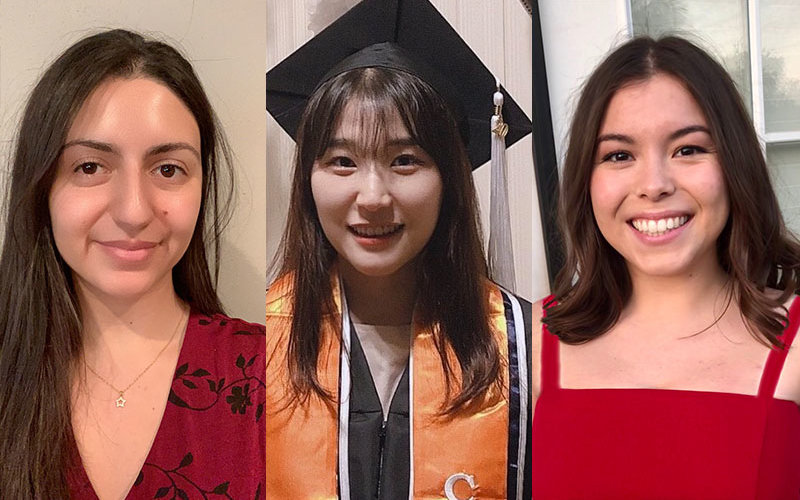
Future math teacher HyeIn Choi and her classmates took a novel approach to developing math lessons by integrating real-world issues related to the coronavirus pandemic.
“We want students to see how math is used all the time and in the media, and how important it is to understand the concepts behind what is being reported,” said Choi, a Class of 2020 graduate who earned a bachelor’s degree in child and adolescent development.
From tracking Orange County’s coronavirus infection rates to conducting statistical analyses of attempts to flatten the curve, each lesson invites students to use mathematical thinking to answer important questions such as “How fast is COVID-19 spreading?” “Does social distancing work?” and “How do we know if data is accurate?”
During the spring semester, Choi and classmates junior Natalie Medina and postbaccalaureate student Lily Tanara enrolled in prerequisite coursework for CSUF’s credential program that prepares students for middle school or high school teaching careers. The five-course sequence covers topics in education such as equity and multicultural education, adolescent development, and disciplinary literacy, a course taught by Alison Dover, associate professor of secondary education.
“In this course, we focus on the types of literacy skills — reading, writing, speaking and listening — that children need to thrive in school and the ways that literacy functions in different contexts,” Dover said.
The course is taken by students preparing to teach all subject areas, including math. Students learn how to help middle school and high school learners interpret the kinds of texts, images and figures they encounter in the classroom, and use language to understand, solve and communicate about data, scientific phenomena and real-world problems, Dover explained.
For many students, the course also is their first opportunity to create lesson plans, in which Dover challenges her students to think deeply about big ideas in their subject area and the world at large.
“I challenge students to focus lessons on questions they want their students to explore for the rest of their lives, and the idea of interpreting data — especially as it is reported in the media — was one of these essential ideas,” Dover added.
“The way HyeIn, Lily and Natalie’s project focused on authentic, emergent issues and that they developed an academically rigorous curriculum around those issues — this is what teaching should be about.”
As part of their work in Dover’s class, Choi, Medina and Tanara created a series of lessons they plan to use in their future classrooms to help high school students analyze the math behind media reports about COVID-19, focusing on the relationship between raw data and media reporting of that data.
“Our goals regarding disciplinary literacy stem from the overarching goal of getting students to think critically about data in the real world and view the news and the media with a mathematical eye,” said Medina. “This is a life skill that they will acquire over time and use their whole lives.”
The future teachers’ objective is that by developing such lessons and giving young students this type of guided exposure, students won’t be “afraid of data.”
“Specifically talking about the COVID-19 pandemic, the media can be very scary and some people may choose to completely turn away from what they are hearing. We want students to know that by understanding certain math concepts, they can analyze data for themselves, and come to their own conclusions,” Tanara said.
Contact: Debra Cano Ramos, dcanoramos@fullerton.edu